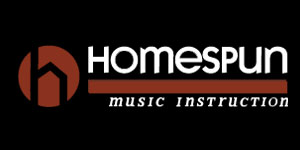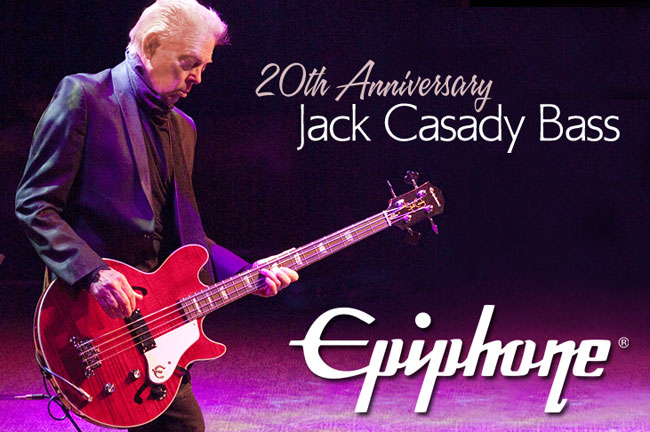Epiphone presents the Ltd. Ed. 20th Anniversary Jack Casady Bass Outfit commemorating the all-time best selling hollowbody electric bass designed by Jack Casady, co-founder of the Jefferson Airplane and Hot Tuna, and a member of the Rock and Roll Hall of Fame.
The new Ltd. Ed. 20th Anniversary Jack Casady Bass Outfit has a maple body with a Flame Maple Veneer top in a commemorative Wine Red finish with single-ply white binding. The hand-set Mahogany neck has a 34″ scale with a 12″ radius fingerboard, a 1.6535″ nut, and 2-ply black/white truss rod cover with “20th Anniversary” silkscreened in white along with Jack’s trademark signature in gold on the headstock. The fretboard has pearloid “Trapezoid” inlays and 20 medium jumbo frets.
Every Jack Casady Signature Bass features nickel hardware, classic style 19:1 ratio tuners, and a 3-point adjustable bridge exactly like what the Rock and Roll Hall of Famer uses on-stage. “Every year I get two new instruments that I take out on the road,” says Casady. “No ringers. I have none that are set up a special way or anything like that and they are great.” The Ltd. Ed. 20th Anniversary Jack Casady Bass Outfit includes a padded gigbag with the 20th Anniversary “Jack Casady 20” logo and a Hand-Signed Certificate of Authenticity.
- Pickups: JCB-1 Low Impedance Humbucker
- Hardware: Chrome
- Scale: 34″
- Nut Width: 1.625″
- Neck: Set, Mahogany
- Fingerboard-Inlay: Rosewood-Trapezoid
- Binding: Body
- Top- Laminated Maple
- Finishes- Ebony (EB), Metallic Gold (MG)
Here is my setup for my JC Epiphone basses: However, please note: This is a general setup that may vary somewhat from bass to bass. There may be slight variations on the instrument itself, and of course different string gauge setups.
- THREE POINT TAILPIECE ASSEMBLY: Front Pole: 4/16″, measuring from wood top surface to bottom of screwcap. Left Rear Pole: 1/2″; Right Rear Pole: 7/16″. There should be a slight “rake” with Front Pole up a bit. Left Rear Pole (the low E string side) will be slightly higher in position than the Right Rear Pole, (the G string side).
- STRING HEIGHT. Low E string, or 4th string: 4/16″, or 1/8″: Measured at 12th Fret. Again this may change slightly from bass to bass. High G string, or 1st string: 5/32″.
- ACTION/NECK SETTING: Please be sure and use the ‘metric” hex wrench supplied with instrument: I keep the neck flat. After removal of the “Truss Rod Nut Cover,” insert hex wrench, and to add Relief to the neck, turn clock wise, or to the right, looking down at the body, from the top of the neck. You will be adding “tension”. and thus raising the center of the neck to meet the strings. If you need more space between the strings: Turn counterclockwise, and release the tension, thus increasing the distance between the strings and the neck. As I said before. My preference is to keep the neck FLAT. You should check this neck setup from time to time do to seasonal changes effecting your bass.
- PREFERRED STRINGS: I use Dean Markley “Blue Steel” strings, round wound. Medium Light. Gauges: E-105; A-80; D-65; G-45.
Remember, that my setup may not be right for you, or your playing style. Do not be afraid to experiment with your own setup so you can get the most out of your instrument. Listen carefully to the tone and make sure there are no excessive string buzzing.
Good luck, and enjoy.
Jack Casady












